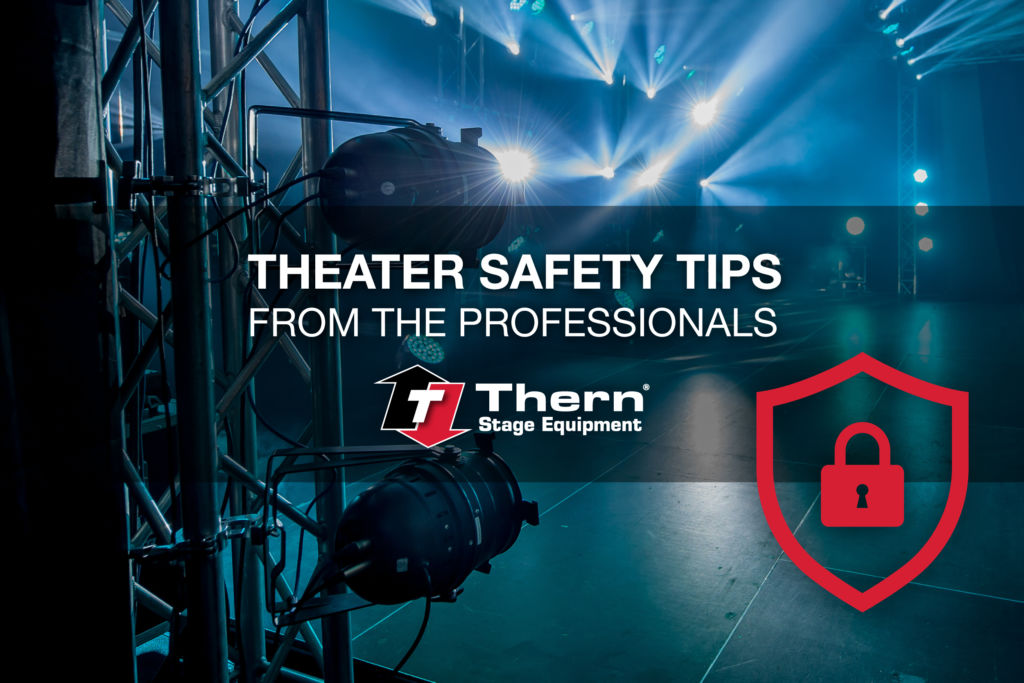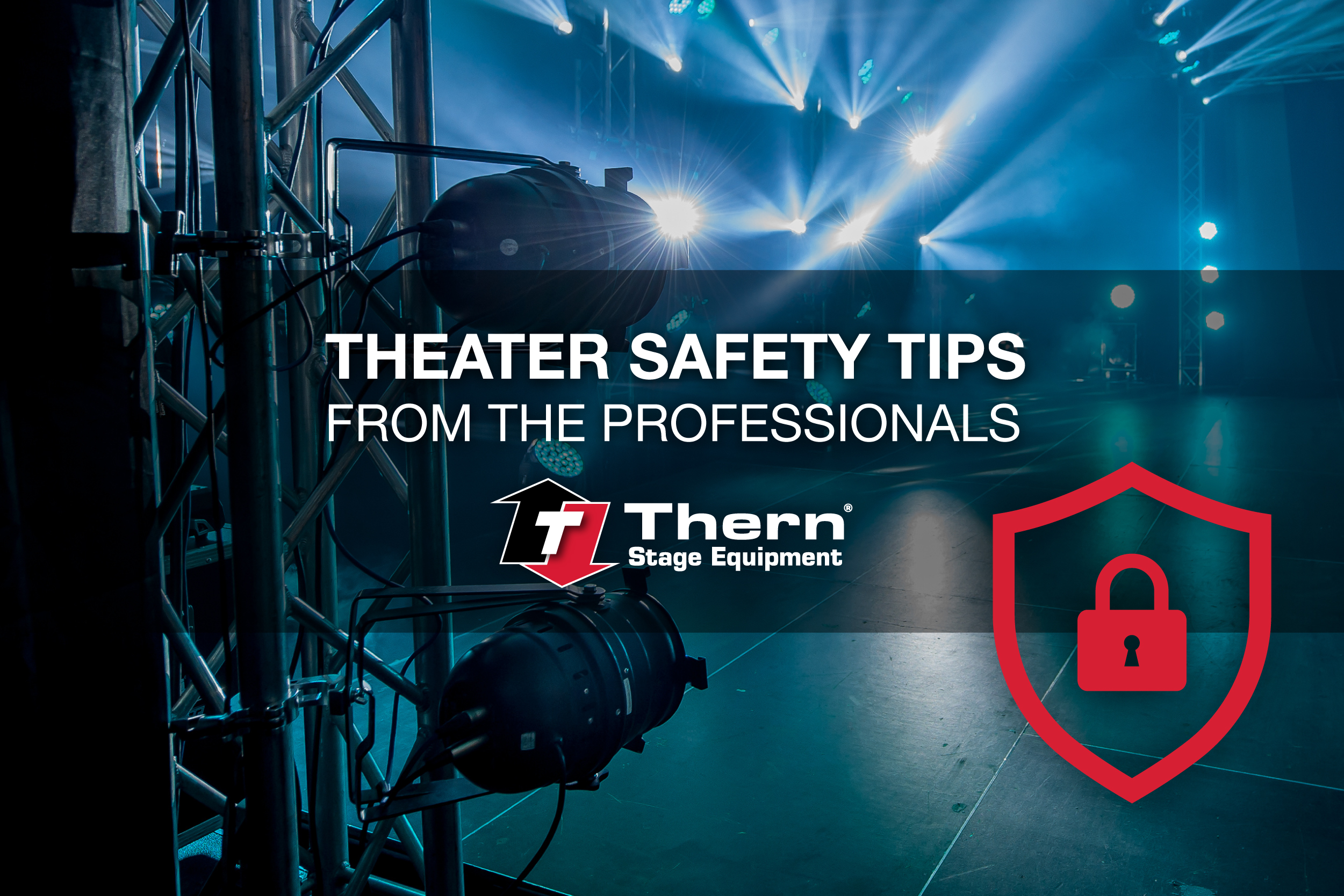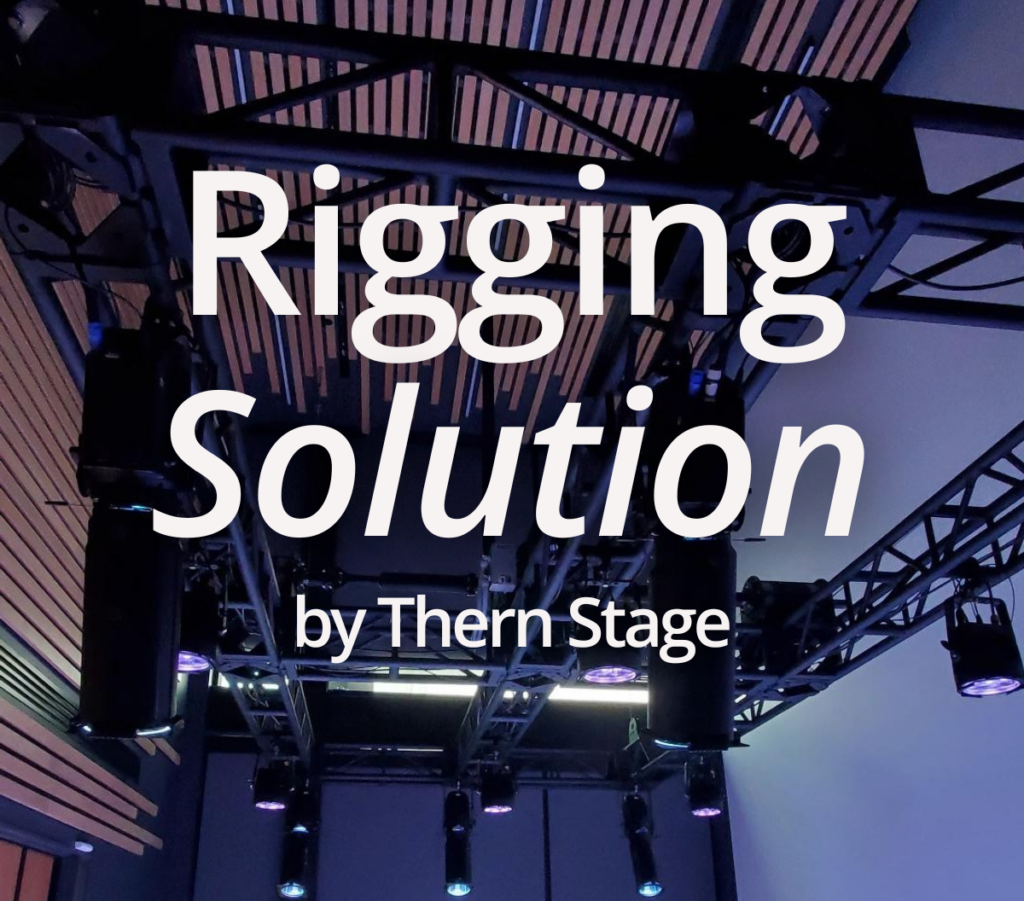Top Five Safety Tips for Theatres
The Thern Stage team would like to share 5 safety tips for preventing incidents and injuries in the theatre. The team members at Thern Stage have a true passion for the industry in which they work. Whether creating, designing, performing, or rigging, the Thern Stage team has experience with safety on stage. Here, they offer their safety tips for theatres:
1. Regular Inspections:
Regular inspections of the rigging system keep theatre cast and crew members safe. Theatres with manual counterweight rigging, motorized rigging or fire curtain hoists, should have an annual inspection. Facilities with a robust production schedule should be inspected even more frequently. Of course, a qualified professional should perform all inspections. The national standard that provides guidelines for theatre rigging inspections is ANSI E1.47. Contact Thern Stage Equipment for a list of qualified rigging inspectors in your area.
2. Fire Curtain Operation:
Fire curtains are devices that are specific to theatres, and so oftentimes fire inspectors may have limited experience with them. Despite this challenge, it’s important for fire curtains to be tested annually by a qualified rigging inspector, as they are a fire suppression device. That way when the fire curtain test is recorded by a local fire inspector, the theater can demonstrate to the local authorities that the system is performing as it should.
3. Brickhouse Rope Lock Adjustments:
Safe rigging systems include rope locks that are correctly adjusted to provide the proper rope holding capacity. The adjustment should be checked at least once per year. Rope locks are rated for up to 50 pounds (roughly 22 kg) of holding capacity. The Brickhouse rope lock is designed to provide holding for linesets that are out of balance up to 50 pounds. Should this limit be exceeded the ¾” rope hand line will slowly begin to slip through the lock, providing an early indication that something is wrong and needs to be corrected right away. To properly set a Brickhouse rope lock to hold approximately 50 pounds of force, see the process listed on page 9 of the product manual.
4. Properly Loading a Brickhouse Front Loading Arbor:
Thern Brickhouse front loading arbors were manufactured with safety in mind. When loading a front loading arbor from the ground, it is important that the operator follows these instructions. First, securely fasten the rope lock in the locked position. Then, open the arbor’s cage by lifting up on the weight retention bar and swinging it all the way open to the locked open position. Next the operator selects the desired counterweight and loads it onto the arbor shelf. Once the operator has added, or removed, the desired weights, the retention bar is lifted and closed. This secures the weights safely in the arbor. The operator then tests the lineset to ensure it’s balanced. Finally, after testing, the operator updates the line set label. This way everyone knows the load has been changed and weight adjusted.
5. It’s Clean Up Time!
Theatre safety starts with a facility that is well lit and well maintained. Because most theatres have countless specialized spaces like catwalks, lighting coves, or grids, they can be very difficult to maintain. Start by keeping theatre spaces clean and organized, making it easy to find what is needed, when it’s needed. While not always easily accomplished, a little time spent organizing is time well spent. Developing a culture that pays attention to organization and cleanliness in the theatre will result in improved safety.
Like you, the experts at Thern Stage want your equipment to operate at its best. Should you find that you have concerns regarding the safety or function of your venue’s rigging equipment, please contact a Thern Stage representative for assistance by calling 507-454-2996 or emailing [email protected].





